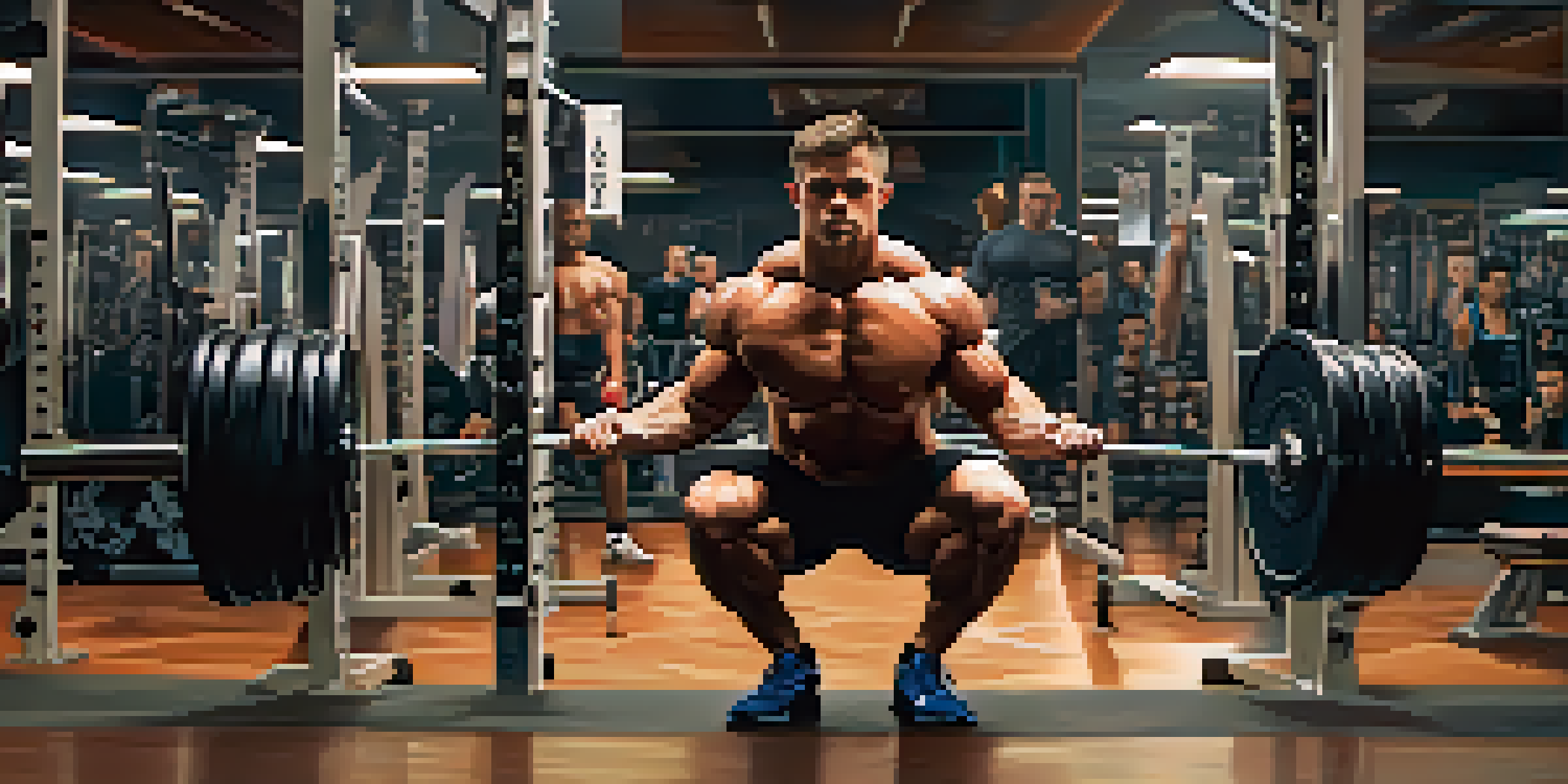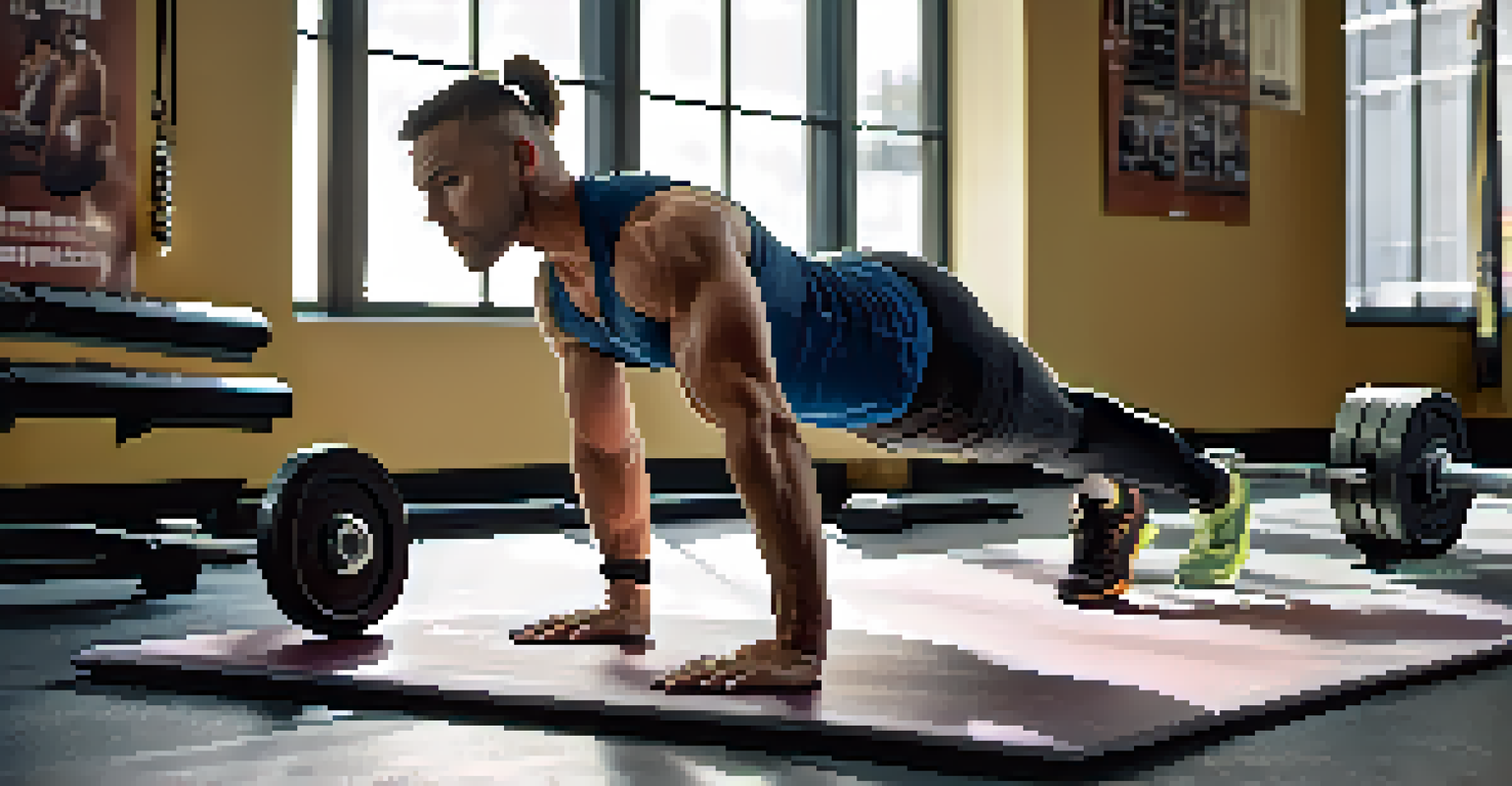The Impact of Core Stability on Powerlifting Techniques

Understanding Core Stability and Its Importance
Core stability refers to the ability of your trunk muscles to support your spine during movement. This stability is crucial for powerlifters, as it helps maintain proper posture and alignment under heavy loads. Think of your core as the foundation of a house; if it's weak, the entire structure is at risk of collapsing, especially when lifting heavy weights.
The human body is the best picture of the human soul.
Having a strong core not only enhances performance but also reduces the risk of injury. When your core is stable, it allows for better force transfer between the upper and lower body, which is essential for lifts like squats and deadlifts. A well-supported spine can handle the strain of intense lifting, making it vital for both beginners and seasoned athletes.
Moreover, core stability plays a significant role in balance and coordination. When you're lifting heavy, even the slightest imbalance can lead to poor form and potential injuries. Ensuring your core is engaged means you're better equipped to handle those demanding movements safely and effectively.
How Core Stability Enhances Squat Performance
The squat is one of the key lifts in powerlifting, and core stability is paramount to executing it correctly. A strong core allows lifters to maintain an upright torso and prevent forward lean, which is vital for safety and efficiency. When your core is engaged, you create a solid base to initiate the movement and drive upward with power.

Without adequate core support, lifters may find themselves leaning too far forward, resulting in poor squat depth and increased risk of injury. This not only affects the performance but also hinders progress over time. Think of it as trying to build a tower of blocks; if the base isn't stable, the tower will wobble and eventually topple.
Core Stability Supports Lifting Safety
A strong core helps maintain proper posture and alignment during heavy lifts, reducing the risk of injury.
Additionally, a strong core aids in maintaining the correct bar path. When the core is stable, it helps keep the barbell centered over the midfoot, optimizing leverage and force application. This means more effective lifts and better results in your powerlifting journey.
The Role of Core Stability in Deadlifts
In deadlifts, core stability is just as critical as in squats. A strong core helps maintain proper spinal alignment as the lifter bends to grasp the barbell and lifts it from the ground. Without this stability, lifters risk rounding their back, which can lead to severe injuries and setbacks.
Your body can stand almost anything. It’s your mind that you have to convince.
Moreover, a stable core allows for better hip hinge mechanics, which are essential for an effective deadlift. Think of your core as the link between your upper and lower body; it coordinates the movement and ensures that power is transferred efficiently from your legs through your torso. This connection is crucial for lifting heavier weights.
Lastly, core stability contributes to overall strength in deadlifts. By engaging the core throughout the lift, you create intra-abdominal pressure, which supports the spine and enhances lifting capacity. This means that not only are you safer, but you're also capable of lifting more weight with better form.
How to Improve Core Stability for Powerlifting
Improving core stability involves targeted exercises that strengthen the muscles surrounding your torso. Planks, bridges, and anti-rotation exercises like the Pallof press are excellent choices. These movements help build endurance and strength in your core, preparing it for the demands of powerlifting.
Incorporating these exercises into your routine doesn’t require a gym full of equipment. Simple bodyweight exercises can be incredibly effective and can easily be done at home. Just a few minutes a day can lead to significant improvements in your core stability and overall lifting performance.
Enhancing Performance through Core Work
Improving core stability allows for better force transfer and technique, leading to more effective lifts.
It's also essential to focus on maintaining good form throughout these exercises. Quality over quantity is key; engaging the correct muscles while performing core exercises will yield better results. As your core becomes stronger, you’ll notice improvements in your powerlifting techniques and confidence in your lifts.
The Connection Between Core Stability and Injury Prevention
Injuries are a common concern for powerlifters, but strong core stability can significantly reduce the risk. A stable core acts as a protective barrier for the spine, minimizing the chances of strains or sprains during heavy lifts. This is especially important when lifting close to your maximum capacity.
When your core is not stable, it can lead to compensatory movements, which often result in injuries. For example, if your core is weak, you might unconsciously over-rely on your back muscles, leading to fatigue and injury. Think of it as a chain; if one link is weak, the entire chain is compromised.
Moreover, maintaining a strong core during lifting helps with recovery. A stable core can assist in proper alignment and movement patterns, allowing for quicker healing from any minor strains. This means you can get back to your training routine sooner and continue to progress in your powerlifting goals.
Adapting Core Stability Techniques for Different Lifts
While core stability is essential for all powerlifting lifts, the approach can vary based on the lift in question. For squats, focusing on exercises that enhance flexion and extension can be beneficial. Conversely, deadlifts may require more emphasis on maintaining a strong and stable back throughout the lift.
It's important to tailor your core training to the specific demands of each lift. For example, incorporating rotational movements can enhance stability for bench presses, while anti-extension exercises can be more beneficial for deadlifts. This targeted approach ensures that your core training supports your overall lifting performance effectively.
Adapt Core Training for Each Lift
Tailoring core stability exercises to specific lifts maximizes performance and minimizes injury risks.
Always remember to listen to your body and adjust your training accordingly. If you find a particular lift challenging, it might be a sign to reassess your core stability training. By adapting your techniques to the lifts you focus on, you can maximize your results and minimize the risk of injury.
Conclusion: Emphasizing Core Stability for Powerlifting Success
In conclusion, core stability is a cornerstone of successful powerlifting. It affects everything from your lifting technique to your overall safety and performance. By prioritizing core strength in your training, you’re not only enhancing your lifts but also paving the way for long-term success in the sport.
As you continue your powerlifting journey, remember that a strong core is invaluable. Incorporate core stability exercises into your routine and pay attention to how they impact your lifts. With dedication and focus, you'll notice substantial improvements in your performance and confidence.

Ultimately, investing time and effort in building core stability will pay off in the form of safer lifts, better technique, and improved results. So, commit to strengthening your core, and watch how it transforms your powerlifting techniques for the better.